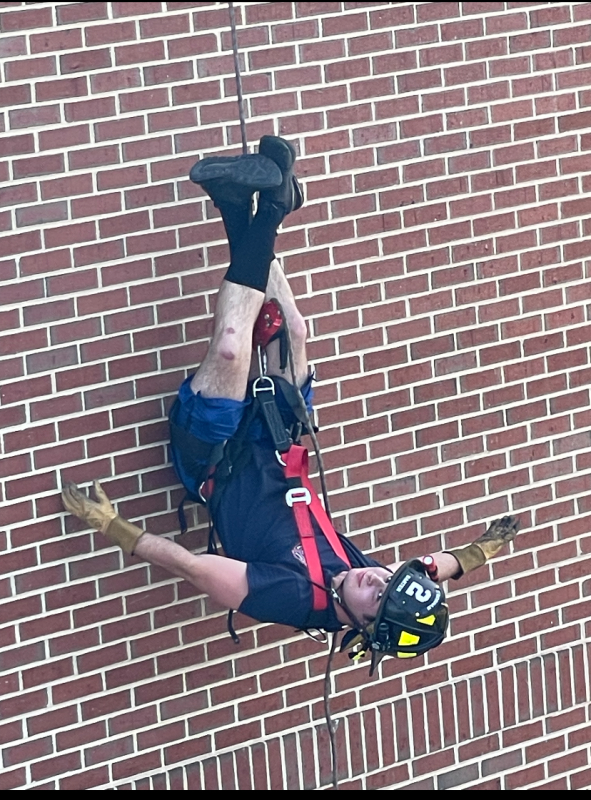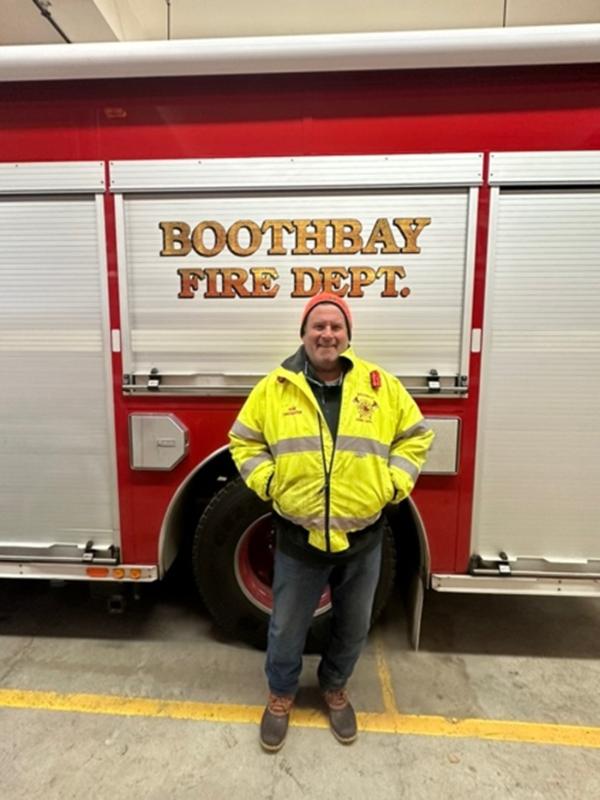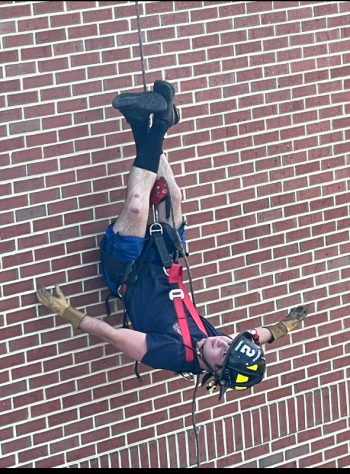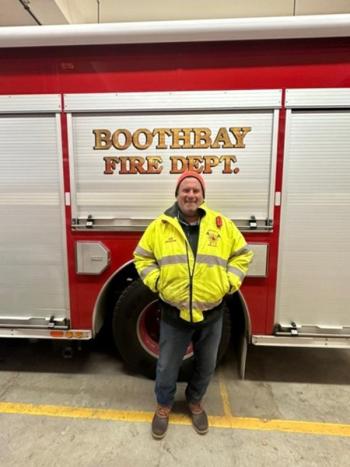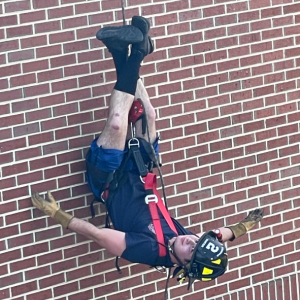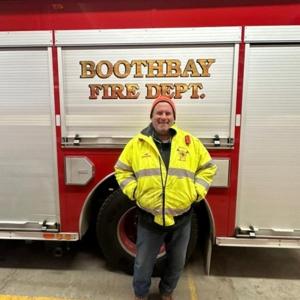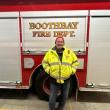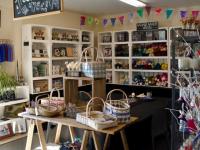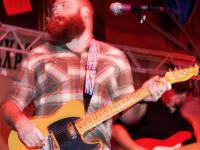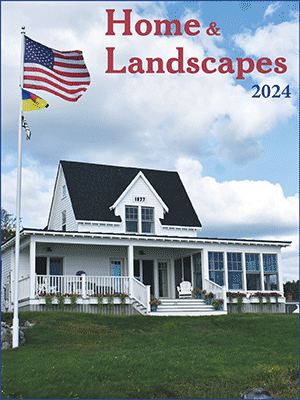Chimney, Fireplace and Heating System Safety Tips
Winter is most certainly still with us, with a combination of an extended period of colder weather and a series of snowstorms affecting our region with increasing snow depths.
As temperatures fall and you spend more time indoors in front of the fireplace and wood stove, or you heat your home with oil or propane, the last thing you want to think about is the condition of your chimney or if your heating exhaust venting systems are working properly. Dirty chimneys can cause chimney fires, which damage or destroy homes and injure people.
Over the past several weeks, we have responded to numerous calls for malfunctioning oil and propane heating systems, as well as wood stove and fireplace chimney fires resulting in dangerous buildups of carbon monoxide (CO) an orderless and life-threatening gas, significant smoke affecting all levels of the residences and uncontrolled fires in the chimney itself.
Clean chimneys don’t catch fire. The use of powder or chemical creosote cleaners is no substitute for an annual inspection. For a thorough cleaning make sure a professional chimney sweep inspects your solid fuel venting system annually and sweeps and repairs it whenever needed. Your sweep may also have specific maintenance recommendations depending on how you use your fireplace or stove.
The chimney and the flue that lines it are there to carry dangerous gases from the fireplace or wood stove safely out of the home.
What do chimneys do?
Fireplaces and wood stoves are designed to contain wood-fuel fires while providing heat for a home. Chimneys expel the by-products of combustion that include smoke, water vapor, gases, unburned wood particles, hydrocarbon, tar fog and assorted minerals. As these substances leave the fireplace or wood stove, and flow up into the relatively cooler chimney, condensation occurs. The resulting residue that sticks to the inner walls of the chimney is called creosote.
What is creosote?
Creosote is a black or brown residue that can be crusty and flaky—tar-like, drippy and sticky—or shiny and hardened. All forms are highly combustible. If it builds up in sufficient quantities, and the internal flue temperature is high enough, the result could be a chimney fire.
Conditions that cause the buildup of creosote:
Restricted air supply and unseasoned wood encourage the buildup of creosote. To avoid that buildup:
-
Do not restrict the air supply:
-
By closing the glass doors.
-
By failing to open the damper wide enough. The longer the smoke is in the flue, the more likely is it that creosote will form.
-
By closing down the stove damper or air inlets on a wood stove too soon or too much.
-
Do not burn unseasoned wood:
-
So much energy is used initially just to drive off the water trapped in the cells of the logs that it keeps the resulting smoke cooler than if seasoned wood is used.
-
In the case of wood stoves, overloading the firebox with wood in an attempt to get a longer burn time also contributes to creosote buildup.
Key Safety Tips
- Install and maintain carbon monoxide and alarms (CO) and smoke detectors outside each sleeping area and on every level of the home. For the best protection, interconnect the alarms. When one sounds, they all sound. Test and inspect annually.
- Have a working fire extinguisher on every floor.
-
Have your chimney, wood stove or other heating system annually inspected and cleaned by a certified company or professional
-
In wood stoves, burn only dry, seasoned wood. In pellet stoves, burn only dry, seasoned wood pellets.
-
Clean the inside of your stove periodically using a wire brush.
-
Allow ashes to cool before disposing of them. Place ashes in a covered metal container. Keep the container at least 10 feet away from the home and other buildings.
-
Keep a close eye on children whenever a wood or pellet stove is being used. Remind them to stay at least 3 feet away from the stove.
-
Stoves need space. Keep anything that can burn at least 3 feet away from the stove.
-
For propane heating systems, make sure the outside venting pipe and vents are free from snow or other obstructions. Check after each storm or on a regular basis.
For residents who do not currently have smoke or CO detectors in their homes, please contact Boothbay Fire at Chief@boothbayfire.org and we can schedule a time to install a detector free of charge. Additionally, please stay tuned as we are planning two instructional, in person hands-on training sessions at Boothbay Fire in late February and in March on how to install and use smoke, CO and fire extinguishers. Exact dates and times will be forthcoming shortly.
Boothbay Firefighter Profile Series
Finally, and as part of our Firefighter Profile, I wanted to share with you two Firefighters who have made a significant impact and difference in the department.
Tyler Barter, while one of our younger firefighters at the age of 19, is also one of our more advanced firefighters, studying at Southern Maine Community College to get a degree in fire science and emergency medicine. Tyler is focused on the profession of firefighting and being an EMT, and over the course of the last few years Tyler’s enthusiasm, dedication and excellence in everything he does has been infectious and impressive to watch.
Rob Cornell joined us six years ago and focuses on Traffic Safety at incidents. This is a key role at fire and motor vehicle accident scenes, as we often have to divert traffic, or allow cars to pass on one lane and very close to serious car crashes and firefighters working at the scene. Rob’s dedication and commitment to teaching others has been tremendous, and he is constantly looking at ways to further improve safety and operations.
Tyler Barter
Why Did I Join - I initially joined the fire service after Deputy Chief Joe Hall asked me to. He told me “That he could see me enjoying and maybe even becoming a career firefighter.” After I joined and ran my first few calls, I realized that I loved the Job, I loved being they’re for people on their worst days trying to help or do what I could to make it better, I loved the skills and training that come with the job.
What do I like the best: love the family aspect. We are together through some tough times, and even if it is unrelated to the department we are there for each other.
What have I learned since joining: Since joining the fire department, I have learned more than I ever expected. I’ve learnt valuable social skills and technical skills. I’ve gotten my Fire 1 & 2 certification, EMT-B, Confined Space Technician, Emergency Vehicle Operations Course, and a Basic Pumps Course. I’ve learnt that being a firefighter is more than a job, it’s a calling, to you and those you work. And what you do means everything to those you protect.
Rob Cornell
Why did I join: I really enjoy helping people and our community and the feeling you get when you positively impact and help someone is tremendous. I have also really enjoyed the team we have here at Boothbay fire, and the range of experiences and backgrounds has been awesome and something I really enjoy getting to know other firefighters.
What do I like best: We get such a wide range of calls, and each situation is always different. We have to make decisions very quickly, work as a team, and in dangerous situations everything has to be done correctly, the first time. I’ve really enjoyed working as part of “one team” to handle these situations, its tremendously rewarding at the end of the call to know that you have helped someone or saved a residence commercial building.
What have I learned since joining: I have been through a wide range of training at the department, over the years, but in the fire service there’s always more to learn. It seems like every day there’s always something else you can learn or a new technique to master. I’ve really enjoyed understanding the complex intricacies of fire/police operations and helping to keep complex fire and incident scenes safe and secure.

